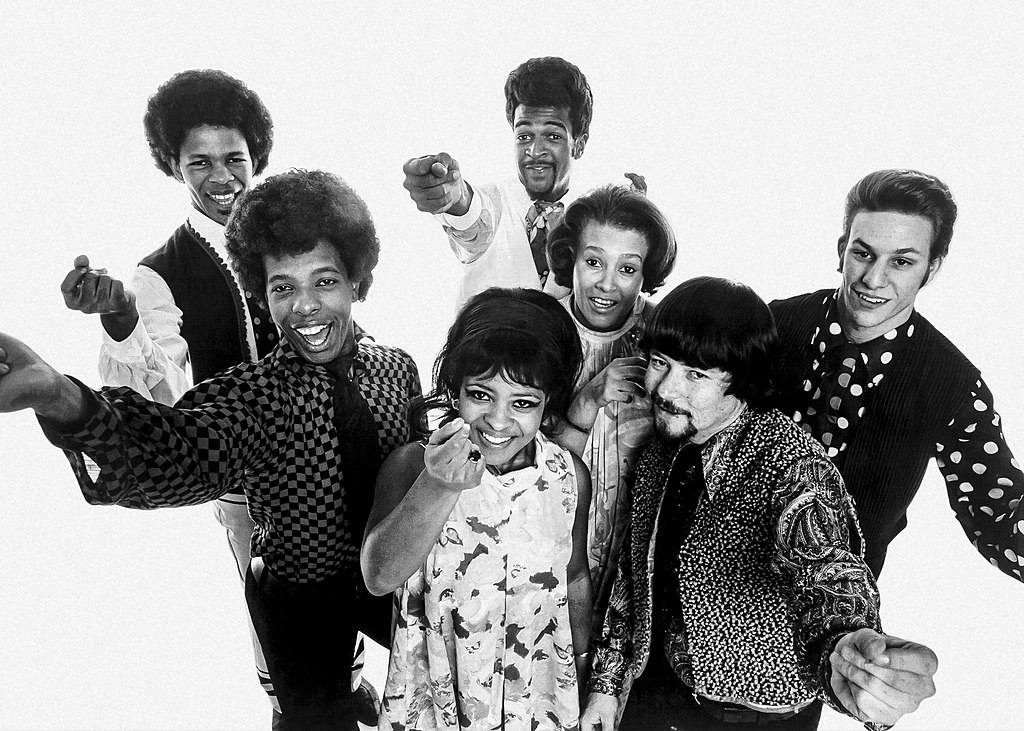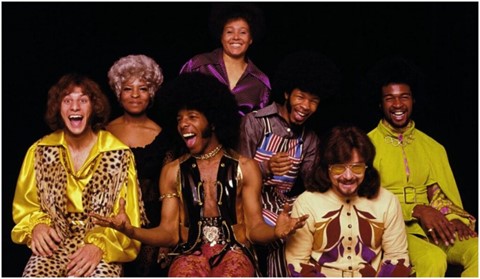
Funk 4
One of the key innovators in Sly and the Family Stone was bassist Larry Graham, who redesigned the use of bass guitar by using the thumb and "thumping" or "slapping" and "plucking" the bass strings in time with the music. You can hear this technique and sound, commonly known as "slap bass," in "Thank You Falletinme Be Mice Elf Agin," the group's 1970 number one pop hit. Graham's work created an entirely new realm of "funky bass" sound integral to funk today. Here is a video of Graham's demonstration of the slap bass technique/sound.

Larry Graham demonstrating the slap bass technique
The Family Stone was a multi-ethnic and multi-gender group that played an innovative social function as well. Each musician could play both a lead and a background role. As a result, the group looked like a united musical family of equals. Unlike the James Brown band, which performed in militaristic unison wearing identical uniforms, the group featured performers in different get-ups, each original and expressive in their particular way. Another of their crucial social contributions was to address " e-racism.Nullifying the effect or force of prejudice and discrimination " head-on with songs such as " Don't Call Me Nigger, Whitey."
Along with James Brown and Sly and the Family Stone in the 1970s, Issac Hayes, Booty Collins, and Stevie Wonder further developed and expanded funk. This decade established funk as a refreshing style through the music of many other "funk bands" such as the Ohio Players, Kool and the Gang, Parliament, and Earth, Wind & Fire. These bands generally use sixteenth-note rhythmsPlaying four even subdivisions in one beat. Consequently, when there exists four beats, one plays sixteen subdivisions. in a rhythmic counterpoint. In addition, they feature synthesizers (such as in " Superstition," 1972, by Steve Wonder), scratch guitar (such as in " Theme From Shaft," 1971 by Issac Hayes), prominent bass lines (such as in " Bootzilla ," 1978, by William "Bootsy" Collins), usually with a moderately slow tempo (such as in " Fire ," 1976, by the Ohio Players), horn sections (such as in " September ," 1978, by Earth, Wind & Fire), and collective improvisation and riffs built on the concept of getting to the groove.








